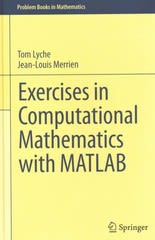Question
A real estate builder wishes to determine how house size (House) is influenced by family income (Income), family size (Size) and education of the head
A real estate builder wishes to determine how house size (House) is influenced by family income (Income), family size (Size) and education of the head of household (School). House size is measured in hundreds of square feet, income is measured in thousands of dollars, and education in years. The builder randomly selected 50 families and ran the multiple regression. The result is presented below in Table 2. XX indicates an unreported value in Table 2.
Table 2 - Regression Summary Output
Regression Statistics ANOVA R square 0.748 df SS MS F p value Adj. R square 0.726 Regression XX 3605 901 XX 0.0001 Std. Err of Reg 5.195 Error XX 1214 27 Observations 50 Total 49 4820
Parameter Estimates
Coeff Std Error t Stat p value
Intercept -1.6335 5.8078 -0.281 0.7798
Income 0.4485 0.1137 3.9545 0.0003
Size 4.2615 0.8062 5.286 0.0001
School -0.6517 0.4319 -1.509 0.1383
11. Referring to the information in Table 2, what fraction of the variability in house size is explained by income, size of family, and education?
- 27.0%
- 33.4%
- 74.8%
- 86.5%
Answer:
12. Referring to the information in Table 2, which of the independent variables in the model are significant at the 1% level?
- Income, Size, School
- Income, Size
- Size, School
- Income, School
Answer:
13. Referring to the information in Table 2, what is the predicted house size (in hundreds of square feet) for an individual earning $40,000, having a family size of 4, and having gone to school for a total of 13 years?
- 11.43
- 15.15
- 24.88
- 53.87
Answer:
14. Referring to the information in Table 2, what is the value of the F test statistic that is missing from the output for testing whether the whole regression model is significant?
- 0.0001
- 0.0299
- 0.726
- 33.37
Answer:
15. Referring to the information in Table 2, what is the correct conclusion the builder should draw about the inclusion of the variable School in the regression model using the 0.01 level of significance?
a) School is significant in explaining house size and should be included in the model because its
p value is less than 0.01.
b) School is significant in explaining house size and should be included in the model because its
p value is more than 0.01.
c) School is not significant in explaining house size and should not be included in the model because
its p value is less than 0.01.
d) School is not significant in explaining house size and should not be included in the model because its p value is more than 0.01.
Answer:
16. The required condition for using an ANOVA procedure on data from several populations is that the:
- Selected samples are dependent on each other.
- Sampled populations are all uniform.
- Sampled populations have equal variances.
- Sampled populations have equal means.
Answer:
17. An ANOVA procedure is used for data that was obtained from three sample groups each comprised of ten observations. The degrees of freedom for the critical value of F are:
- 2 and 30.
- 2 and 27.
- 3 and 26.
- 3 and 20.
Answer:
Use the information below to answer Questions 18 and 19.
The following information was obtained from matched samples. The daily production rates for a sample of workers before and after an information systems training session are shown below.
Worker Before After
1 20 22
2 25 23
3 27 27
4 23 20
5 22 25
6 20 19
7 17 18
18. Using the information above,the point estimate for the difference between the means of the two
populations is:
- -1
- -2
- 0
- 1
Answer:
19. Using the information above and the answer to Question 18,the correct statistical decision for a hypothesis test that the difference between the means of the two populations is equal to zero is:
- The null hypothesis should be rejected.
- The null hypothesis should not be rejected.
- The alternative hypothesis should not be rejected.
- None of the above
Answer:
Use the following information to answer Question 20.
In a completely randomized design involving three treatments, the following information is provided:
Treatment 1 Treatment 2 Treatment 3
Sample Size 5 10 5
Sample Mean 4 8 9
20. The overall mean for all the treatments is:
- 6.5
- 7.25
- 8.0
- 9.75
Answer:
Step by Step Solution
There are 3 Steps involved in it
Step: 1

Get Instant Access to Expert-Tailored Solutions
See step-by-step solutions with expert insights and AI powered tools for academic success
Step: 2

Step: 3

Ace Your Homework with AI
Get the answers you need in no time with our AI-driven, step-by-step assistance
Get Started


